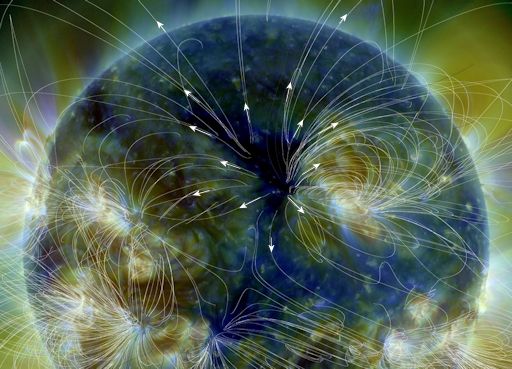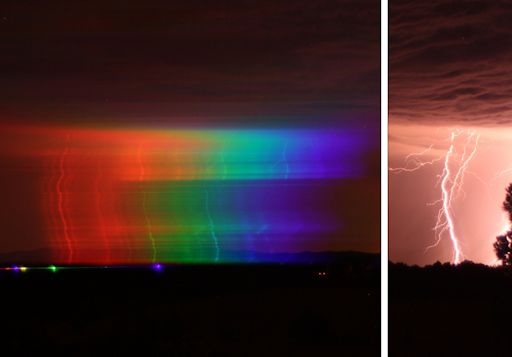They came from outer space--and you can have one! Genuine meteorites are now on sale in the Space Weather Store. | | |
AURORA WATCH: The interplanetary magnetic field (IMF) inside the solar wind is tilting south on August 27th. This condition often sets the stage for polar geomagnetic storms. High-latitude sky watchers should be alert for auroras after nightfall. Aurora alerts: text, voice.
NORTHERN CORONAL HOLE: Magnetic fields in the sun's northern hemisphere have opened up, creating a hole in the sun's upper atmosphere. This August 27th image from NASA's Solar Dynamics Observatory shows how solar wind is streaming out of the coronal hole:

The solar wind stream is heading for Earth, due to arrive on August 30-31. Its impact will not be a major event. Nevertheless, it could spark minor geomagnetic storms and auroras at high latitudes. This is good news around the Arctic Circle where the midnight sun is setting. Darkening skies will allow auroras to be seen for the first time in months. Browse the aurora gallery for a preview.
Realtime Aurora Photo Gallery
THE COLORS INSIDE A LIGHTNING BOLT: To the human eye, a nearby flash of lightning looks blindingly white. But have you ever wondered what colors might emerge if the flash were spread out chromatically, like a rainbow? During a recent thunderstorm in Tarn, France, David Antao decided to find out. "I am an enthusiastic astro-spectroscopist," he says, "so I couldn't resist shooting some spectra." Here is the result:

"I found it really beautiful!" says Antao.
All of the colors of a rainbow are present in the lightning strike, but some colors are stronger than others. Red, green and blue emission lines zig-zag across the spectrum tracing the shape of the original bolt. These colors are mainly due to the recombination of electrons with nitrogen molecules broken apart and ionized by the searing heat of the lightning discharge. Lines from oxygen, hydrogen, and nitrogen oxides are present, too.
"By analysing this spectra, it is possible to determine the temprature of the lightning," notes Antao. "I am trying to do this now."
Realtime Space Weather Photo Gallery
Realtime Noctilucent Cloud Photo Gallery
[previous years: 2003, 2004, 2005, 2006, 2007, 2008, 2009, 2011]
Realtime Comet Photo Gallery
Potentially Hazardous Asteroids (
PHAs) are space rocks larger than approximately 100m that can come closer to Earth than 0.05 AU. None of the known PHAs is on a collision course with our planet, although astronomers are finding
new ones all the time.
On August 27, 2013 there were 1421 potentially hazardous asteroids.
Notes: LD means "Lunar Distance." 1 LD = 384,401 km, the distance between Earth and the Moon. 1 LD also equals 0.00256 AU. MAG is the visual magnitude of the asteroid on the date of closest approach. | | The official U.S. government space weather bureau |
| | The first place to look for information about sundogs, pillars, rainbows and related phenomena. |
| | Researchers call it a "Hubble for the sun." SDO is the most advanced solar observatory ever. |
| | 3D views of the sun from NASA's Solar and Terrestrial Relations Observatory |
| | Realtime and archival images of the Sun from SOHO. |
| | from the NOAA Space Environment Center |
| | the underlying science of space weather |

